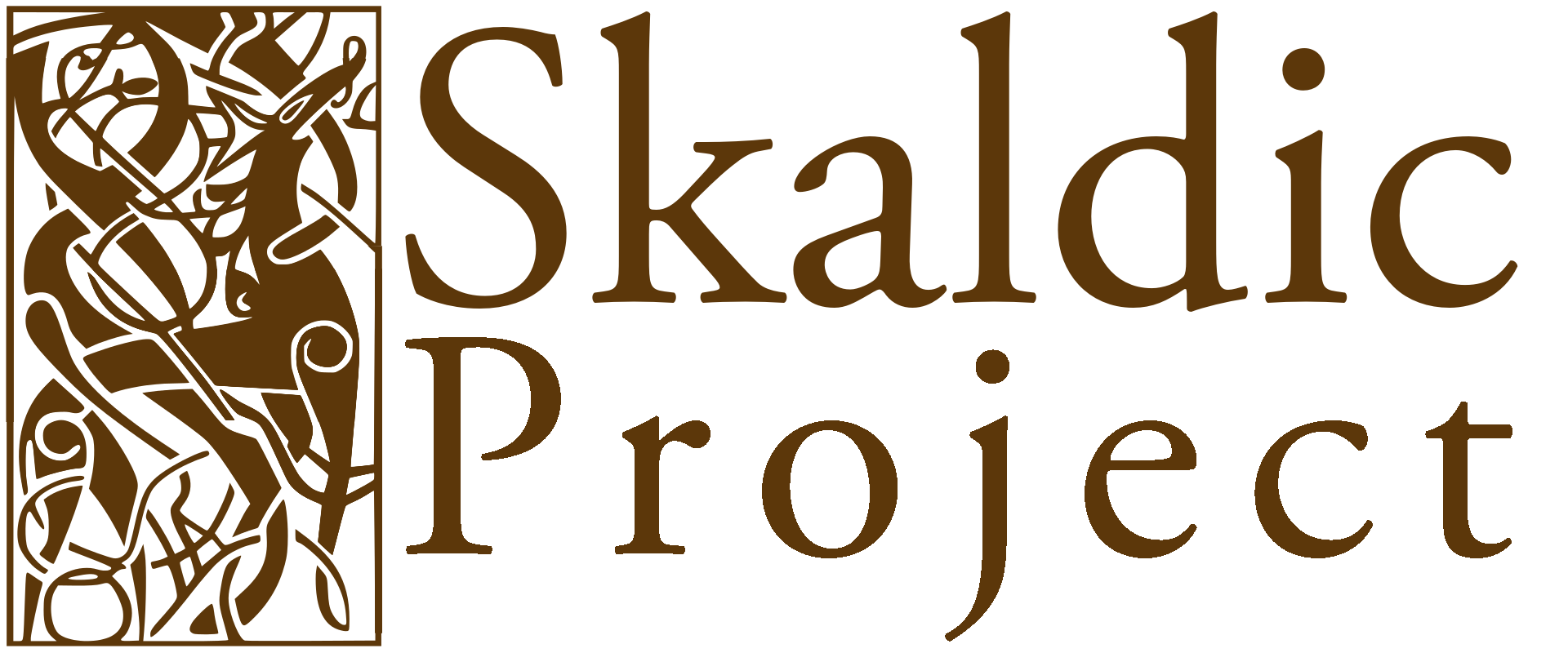Note to Ásb Ævkv 2VIII (OStór 5)
[1]: The first line of sts 5-11 is unvarying, constituting a kind of initial line refrain, similar to the practice of another ævikviða, Anon Krm’s Hjuggu vér með hjörvi ‘We hewed with the sword’. The purpose of these refrains is to draw attention to the contrast between the speaker’s present situation and his former heroic life. This edn, along with Skj B, adopts 2845’s version of l. 1, which is also found verbatim in Gr (ÍF 7, 52; Grett Lv 6/1V (Gr 14)), where inni ‘inside’ is definitely used adverbially. Kock (NN §2495A and Skald) emends to þat er inni ‘which I relate’ (following Flat’s ek inni), treating inni as 1st pers. sg. pres. indic. of inna ‘tell, relate’ on the ground that the adverbial sense of inni does not suit five of the seven stanzas (6-8, 10 and 11) in which it occurs. However, if one assumes imitation from Gr, or even a general imitation of the practice of other ævikviður, the loose fit of this refrain line is probably acceptable (cf. Faulkes 2011b, 94-5 n.). Ms. 554h ßˣ has the same alternative reading of l. 1 in sts 7-11 as here.
References
- Bibliography
- Skj B = Finnur Jónsson, ed. 1912-15b. Den norsk-islandske skjaldedigtning. B: Rettet tekst. 2 vols. Copenhagen: Villadsen & Christensen. Rpt. 1973. Copenhagen: Rosenkilde & Bagger.
- Skald = Kock, Ernst Albin, ed. 1946-50. Den norsk-isländska skaldediktningen. 2 vols. Lund: Gleerup.
- NN = Kock, Ernst Albin. 1923-44. Notationes Norrœnæ: Anteckningar till Edda och skaldediktning. Lunds Universitets årsskrift new ser. 1. 28 vols. Lund: Gleerup.
- ÍF = Íslenzk fornrit.
- ÍF 7 = Grettis saga Ásmundarsonar. Ed. Guðni Jónsson. 1936.
- Faulkes, Anthony. 2011b. Two Icelandic Stories: Hreiðars þáttr, Orms þáttr. New edition. London: Viking Society. First published [n. d. (1967)].
- Internal references
- 2022, ‘ Anonymous, Grettis saga Ásmundarsonar’ in Margaret Clunies Ross, Kari Ellen Gade and Tarrin Wills (eds), Poetry in Sagas of Icelanders. Skaldic Poetry of the Scandinavian Middle Ages 5. Turnhout: Brepols, pp. 640-806. <https://skaldic.org/m.php?p=text&i=70> (accessed 24 April 2024)
- Rory McTurk 2017, ‘ Anonymous, Krákumál’ in Margaret Clunies Ross (ed.), Poetry in fornaldarsögur. Skaldic Poetry of the Scandinavian Middle Ages 8. Turnhout: Brepols, p. 706. <https://skaldic.org/m.php?p=text&i=1020> (accessed 24 April 2024)
- Jonathan Grove (ed.) 2022, ‘Grettis saga Ásmundarsonar 14 (Grettir Ásmundarson, Lausavísur 6)’ in Margaret Clunies Ross, Kari Ellen Gade and Tarrin Wills (eds), Poetry in Sagas of Icelanders. Skaldic Poetry of the Scandinavian Middle Ages 5. Turnhout: Brepols, p. 667.
